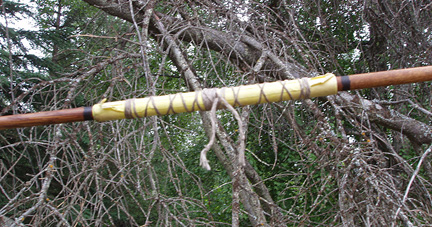
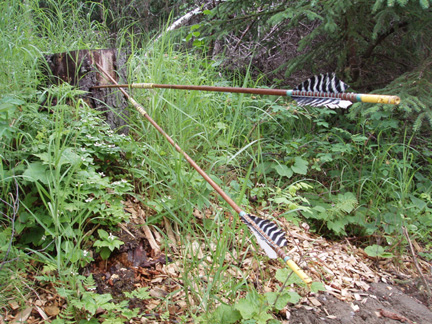
A year and a half ago, I was experimenting with scarf joints on darts. I discovered the scarf and tube as a way of joining dart shafts together without glue. The two mirror image scarfs wedge into the tube. The tube gives the joint lateral strength and the cord gives the joint radial strength. The tube doesn't affect the dart's flight. All my two piece darts fly as fast and as accurately as my single shaft darts.


Tubes are twice the length of the scarf. Eight inches for a four inch scarf. Two sheets of copy paper, 8 1/2" x 11", rolled in a tight tube with 6 feet of waxed
cord spiraled around the tube makes a great tube. Even after striking stumps with 8 ounce, steel tipped darts, I haven't broken a scarf joint that used a tube twice the length. The cord around the tube doesn't need to be very strong, depending on how many times it goes around the tube. Even strips of willow bark can be used to hold the tube together. Tubes can also be made with natural materials, like birch bark, tulip poplar bark or other barks. You can also use leather or raw hide, split or whole pieces of cane or bamboo, or even bundled twigs and stems.
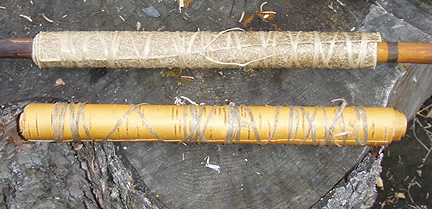
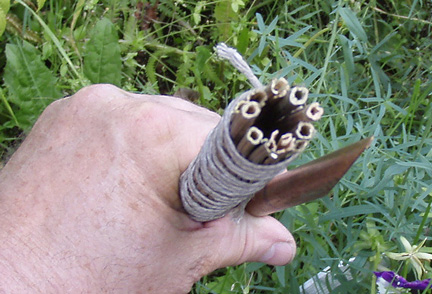
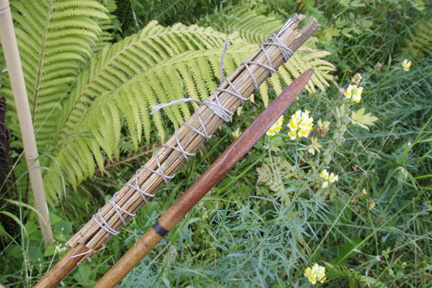
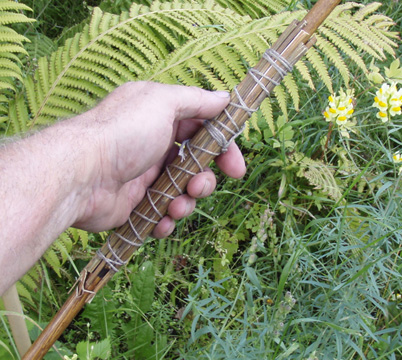
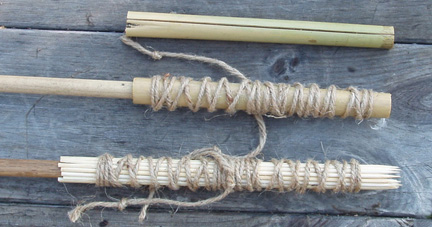

The advantages are numerous. Dart shafts can be taken apart or reassembled in seconds. When you break a dart shaft (and you will eventually), you only loose half the shaft. If the joint jams, put a loop of strong cord that is wrapped 3 times around the shaft. While sitting on the ground, place your foot into the loop and pull hard to break apart the joint.
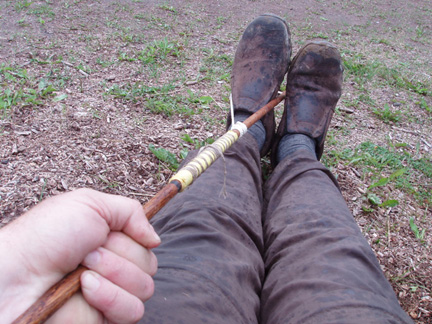
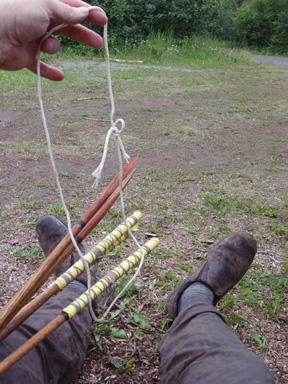
In the actual hunting of larger game, the animal will take off after being hit. It will run through trees or brush, breaking off the front half of the shaft. With a two piece dart, you lose only half the shaft. A scarf tube also adds valuable total weight, about an ounce.
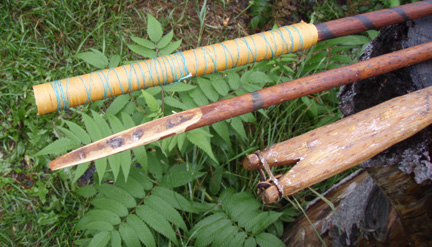
In many places, shoots of the right diameter aren't longer than 3 to 4 feet, especially here in Alaska. I join the thicker ends of shoots in the middle at the scarf, giving me a nice double taper. This lets me use a shoot that is 1/2" x 5/8" in diameter without having to whittle much at all. Extremely robust two piece darts can be made from willow, wild rose, high bush cranberry or even 3" and 4" x 1/2" dowels. Pithy shoots, like red elderberry, hollow cane and bamboo, can be used with the scarf and tube method. The system works so well that even if I had access to a 7 feet dart shaft material, I would still cut it in half to get the advantages. An 8 to 1 scarf ratio is just about ideal. So, on a 1/2" diameter shaft, the joint would be 4 inches long. The scarf can be cut with a saw and a simple jig, a pocket knife, a stone blade or ground on a coarse flat rock. Cutting a scarf is a lot easier than trying to split and whittle down a 7 feet sapling to the right diameter with stone or even steel tools.
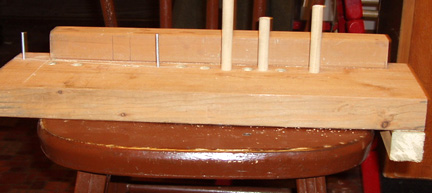
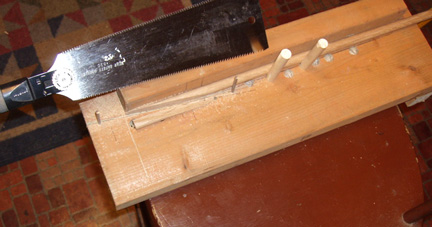
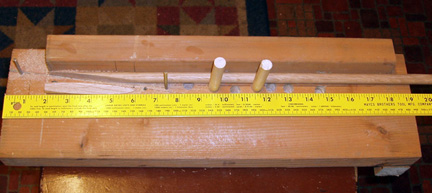
The scarf joint on antler points have been found in Europe as old as 18,000 years. As yet, no one has found a scarf tube. Probably, not because it wasn't used, but because organic material just doesn't preserve in the prehistoric record. In the Yukon ice patches, willow darts with scarfs in the middle, bound with sinew, have been found dating back over 9,000 years. Maybe a scarf tube will be found in the ice some day. If I could think of it, then probably an ancestor did too.
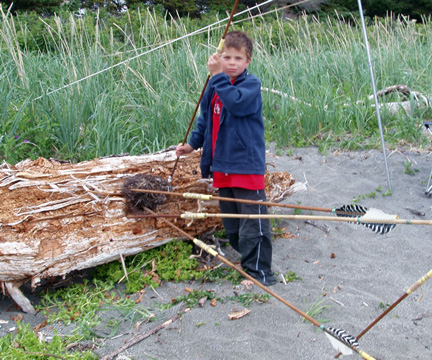
Email your comments to "Mike Richardson" at fiddler49@hotmail.com
Mike Richardson resides in Anchorage, Alaska.
We hope the information on the PrimitiveWays website is both instructional and enjoyable. Understand that no warranty or guarantee is included. We expect adults to act responsibly and children to be supervised by a responsible adult. If you use the information on this site to create your own projects or if you try techniques described on PrimitiveWays, behave in accordance with applicable laws, and think about the sustainability of natural resources. Using tools or techniques described on PrimitiveWays can be dangerous with exposure to heavy, sharp or pointed objects, fire, stone tools and hazards present in outdoor settings. Without proper care and caution, or if done incorrectly, there is a risk of property damage, personal injury or even death. So, be advised: Anyone using any information provided on the PrimitiveWays website assumes responsibility for using proper care and caution to protect property, the life, health and safety of himself or herself and all others. He or she expressly assumes all risk of harm or damage to all persons or property proximately caused by the use of this information.
© PrimitiveWays 2013